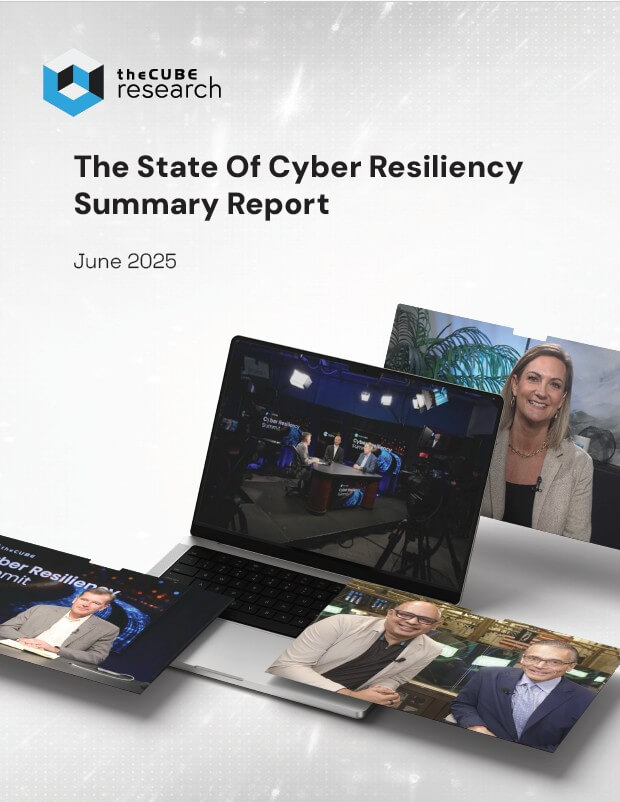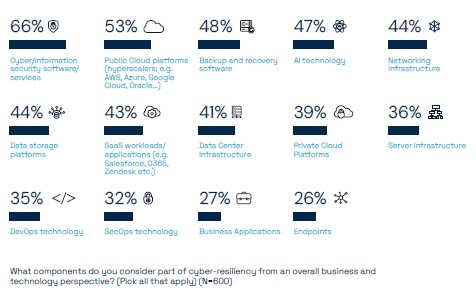Research-driven Data
Cyber resiliency is crucial for organizations, encompassing both proactive and reactive strategies to safeguard against cyber threats. By examining the state of cyber resilience through the NIST2 cybersecurity framework, we were able to gain valuable insights. From our standpoint as a research company, identifying specific trends across key infrastructure technologies, such as data management, networking, and backup and recovery, is crucial for understanding the landscape.
Our research was conducted in Q1 2025 with 600 qualified respondents, including 50% from North America, 25% from Western Europe, and 25% from the APAC region. The respondents com prise 50% IT professionals and 50% cybersecurity professionals, all of whom are involved in the technology and processes associated with delivering cyber resilience and are familiar with the NIST CSF.

This research stems from our recent summit on cyber resiliency.
Key Components of Cyber Resiliency
Cyber resiliency has been defined in various ways by both vendors and analysts. Our research-based definition indicates that while cybersecurity software and services are understandably regarded as the foremost components of cyber resiliency, public cloud platforms rank second in significance.
This distinction is critical, as it will influence how organizations structure their teams, allocate investments, and develop detection, protection, and recovery strategies in alignment with their infrastructure. Consequently, possessing robust capabilities and skill sets related to public cloud platforms is also essential.

Moreover, respondents identified backup and recovery software as a key component of cyber resiliency, which is unsurprising, given that true resiliency cannot be achieved without the capacity to recover data, applications, and infrastructure components.
AI In The Mix…
The emergence of artificial intelligence (AI) technology in fourth place, closely following backup and recovery software, is particularly noteworthy. This suggests that respondents perceive AI as a crucial capability necessary for establishing a more resilient infrastructure, with some indicating an intent to employ AI to counter AI-driven threats. This development conveys a significant message to industry vendors: there is a pressing need to integrate AI into their future offerings. We recently covered the relationship between data protection, cyber resiliency and AI in another summit. Research on this very topic is forthcoming.
…SaaS Too!
It is also essential to highlight other critical infrastructure components, such as networking, data storage, and Software as a Service (SaaS) workloads, within the context of cyber resiliency. From years of experience in this market and numerous industry conversations, it is clear that SaaS data can be challenging to fully integrate into a holistic data resilience strategy and may even be overlooked by some. Ask yourself these questions: What SaaS applications do I use every day at work? Where is the backup? How do I guarantee the integrity of the data? How do I recover if something goes wrong?
Next Steps
Please review various blogs, summits, analyses, and coverage of this unfortunate “hot” topic. Achieving cyber resiliency will take years, and it should be your top priority as an IT or cyber professional, and as a business leader.
Summits
https://www.thecube.net/events/thecube/cyber-resiliency-summit
https://www.thecube.net/events/thecube/data-protection-ai-summit
Last Blogs


